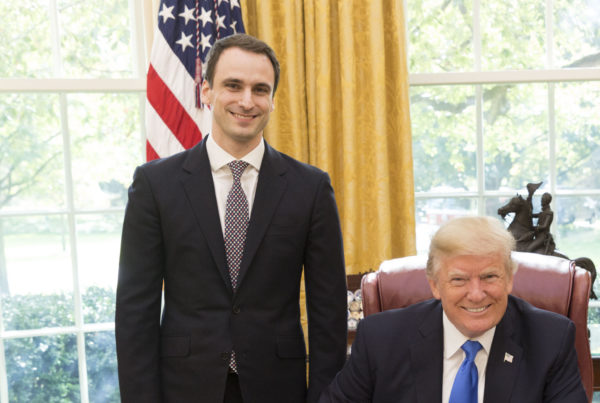President Donald Trump and Chinese leaders have signed an agreement as part of phase one of ending the trade war between the United States and China. In it, China agrees to spend $40 billion to $50 billion on U.S. agriculture exports, $75 billion on manufacturing, $50 billion on energy and $40 billion on financial services. The agreement avoids the worst-case scenario some economists predicted, but it’s not the end of the dispute. The deal also has many implications for the American economy, of which Texas is a big part.
Raymond Robertson is director of the Mosbacher Institute for Trade, Economics and Public Policy at Texas A&M University. He says one of the big changes established in the agreement is the protection of American intellectual property. He says before, China would require that American companies share their intellectual property as a prerequisite for doing business there.
“Now there’s provisions in this agreement that China will crack down on that,” Robertson says.
China has also promised to spend much more on American energy and goods than ever before, but Robertson says he’s not sure if China will be able to follow through.
What’s more, the agreement doesn’t reduce U.S. tariffs on Chinese goods by much – they will be 19%, down from 21%, in some cases. Robinson says research shows that’s costly to consumers.
“The United States consumers are paying 100% of those tariffs; the tariffs are not imposing costs on China,” Robertson says.
The effect is higher prices at grocery stores. But the tariffs have also had a big effect on the manufacturing sector. Even though the U.S. economy is doing well, and the unemployment rate is the lowest in decades, Robertson says the tariffs will likely have an effect on manufacturing jobs that won’t materialize immediately.
Robertson says the Trump administration goal should ultimately be to lower tariffs, which were about 3% before the trade war. But if China doesn’t follow through on the billions it promised to spend on American imports, tariffs will go up even more.
“It could go either way. But we’d like to be optimistic that this is a positive step and that we’re going to make continued progress on reducing those tariffs and opening these markets,” Robertson says.
Written by Caroline Covington.















